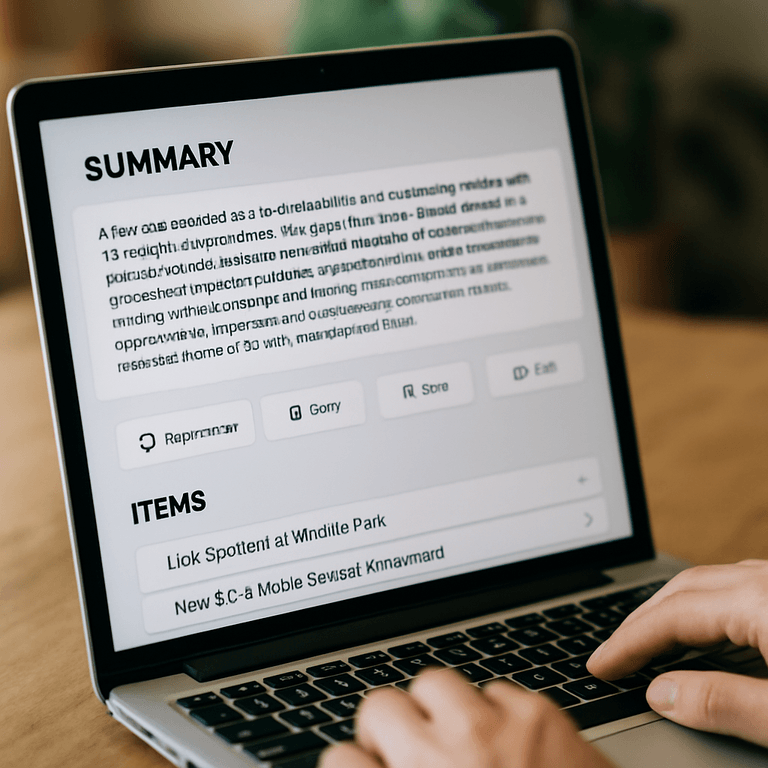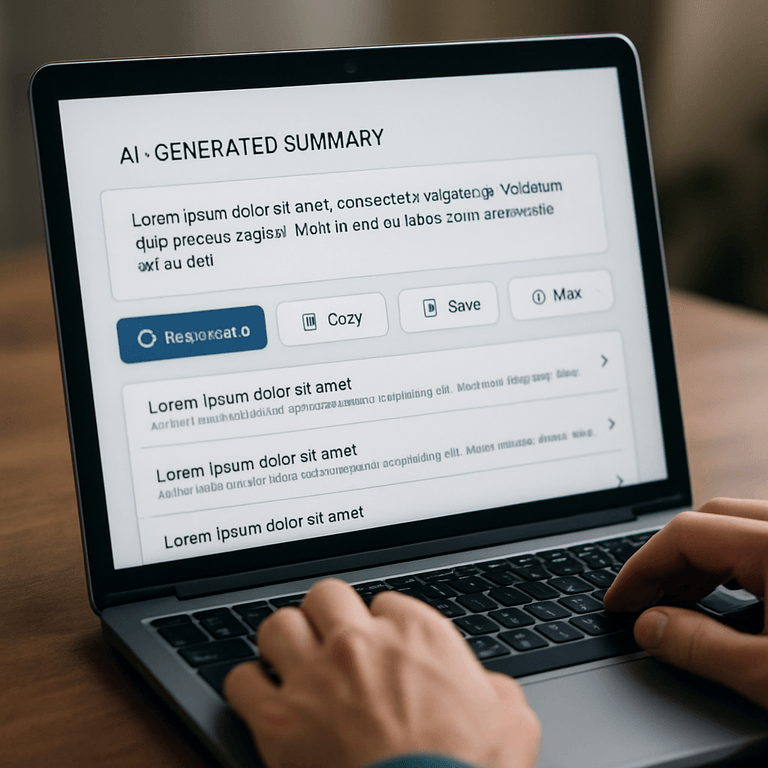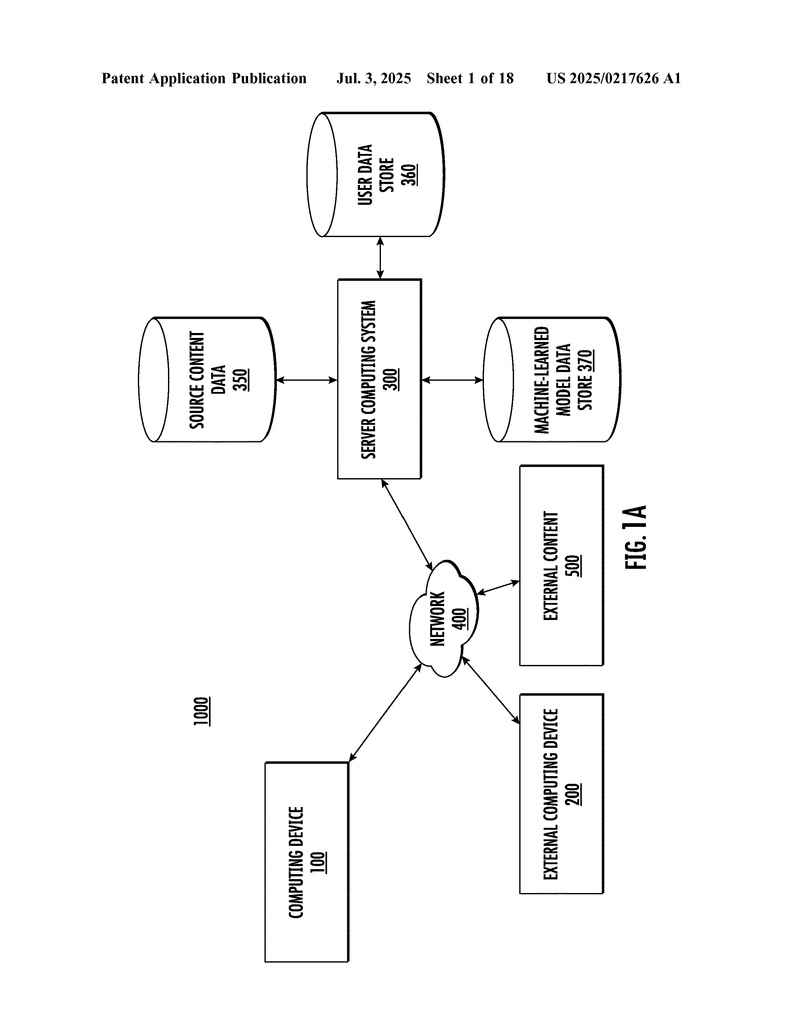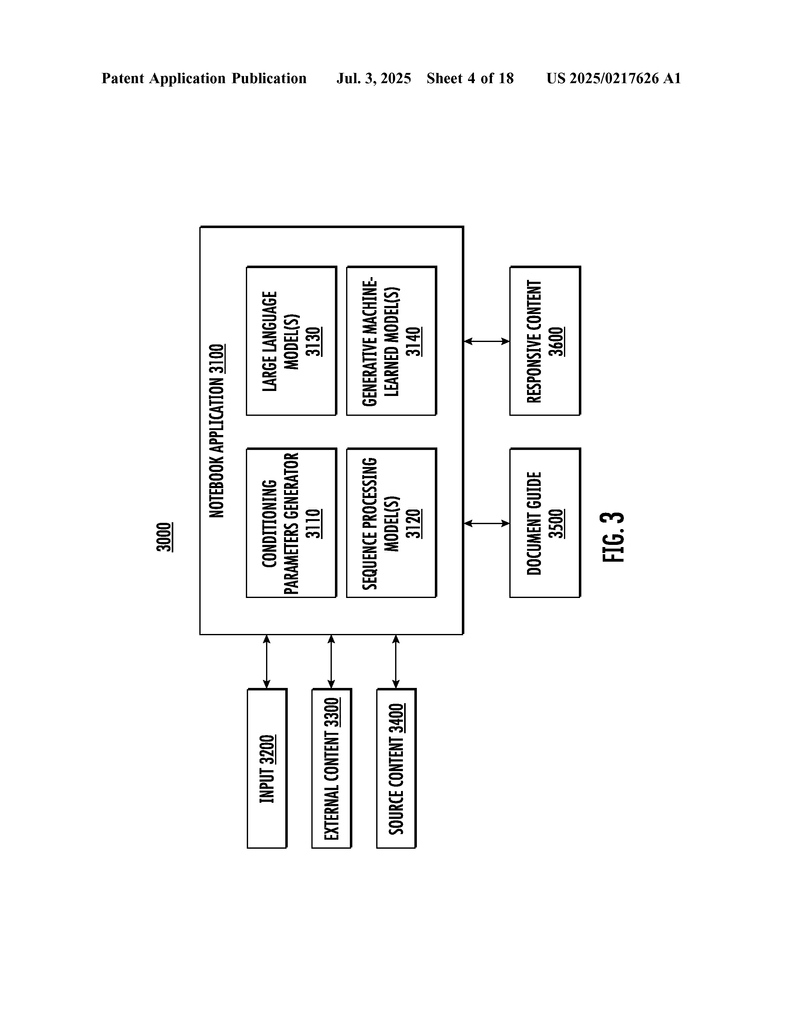Invented by Martin; Raiza, Bignell; Adam Joshua, King; Oliver Michael, Hutchins; Wesley Carrington, Sharma; Piyush, Spielman; Jason Samuel, Johnson; Steven, Murray; Darryl James, Hughes; Stephen, Gleason; Timothy Michael
In this article, we’ll break down a new patent application for a computing device that uses artificial intelligence to help people manage, organize, and create content. We’ll look at why this invention matters, what the science and earlier inventions are behind it, and what’s truly new about this technology. If you work with lots of digital files, want to use AI to save time, or just love learning about patents, this guide is for you.
Background and Market Context
Imagine you have a big pile of documents, emails, videos, or pictures. Maybe you’re a student, a lawyer, a researcher, or just someone who likes to keep things tidy. You want to find the most important points, group similar things together, ask questions about your files, and even make new summaries or notes. Until recently, doing this meant lots of copying and pasting, opening and closing windows, and jumping between apps. This can take a long time, is boring, and can be confusing if you lose your place.
Now, with the rise of artificial intelligence, especially large language models (the smart engines behind tools like ChatGPT), more people can ask computers to help them with their files. But there’s still a problem: most current tools make you copy and paste your content into a chat box, type in a question, wait for an answer, and do it all over again if you want to ask something else. This wastes time and energy, especially when you want to work with more than one file or ask more than one question.
The market is full of note-taking apps, document editors, and even some smart tools that try to help you organize your stuff. Programs like Microsoft OneNote, Evernote, Notion, and Google Keep let you make notes or put files in folders. Some apps, like Mem or Roam Research, try to make it easier to link ideas together. But these tools usually don’t use AI to read lots of your files at once, answer deep questions, or create new summaries automatically. If they do use AI, it’s often just a simple chatbot or search box, and you still have to do a lot of the hard work yourself.
The patent application we’re looking at aims to fix these problems. It describes a computer system—a mix of software and hardware—that lets you pick a bunch of files, have the computer read and understand them using AI, and then gives you a special user interface (UI). This UI shows you a summary, lets you ask questions, suggests topics or queries you might like, tracks where the AI got its answers, and helps you make or organize notes. All of this happens in one place, without copying and pasting or switching between apps.
This approach is perfect for students who want to study from different books or articles, workers who need to pull together reports from many sources, or anyone who wants to work smarter, not harder. As more people use AI in their daily work, tools that can handle lots of content and give clear, helpful answers are in high demand.
Scientific Rationale and Prior Art
To really understand what’s new here, let’s look at how computers and AI have helped people with content before, and where this invention takes things further.
Computers have always been good at storing, searching, and sorting files. Early note-taking apps let you type notes, add tags, or put files in folders. Search engines helped you find words or phrases in your files. But when it came to making sense of lots of documents—finding the big ideas, making summaries, or answering tricky questions—you were on your own.
With the rise of machine learning, more advanced tools appeared. These include:
- Text summarizers: Early AI could make short summaries of articles, but often only one at a time.
- Keyword extractors: Some programs could pull out important words or topics from a file.
- Clustering: AI could group similar documents together, like putting all emails about a meeting in one place.
- Chatbots and question-answering bots: These could answer questions about a single file, if you pasted it in.
Large language models (LLMs), like BERT or GPT, changed the game. They can read lots of text, answer open-ended questions, and even write new text. But most LLM tools still make the user do the hard part: choosing what content to give them, copying it in, and asking the right question. Some research tools, like Semantic Scholar or Elicit, use AI to help find papers or answers from a database. But these are focused on public data, not your own files.
There are a few tools that try to bring these ideas together. For example, some plugins for note-taking apps let you ask questions about your notes using AI. Some research platforms let you upload several documents and search across them. But most of these don’t give you a unified interface with AI-powered summaries, suggested questions, detailed citations, and smart note creation—all based on any files you pick.
The scientific breakthrough in this patent is the way it combines:
- Using machine-learned models to read many pieces of content at once (not just one).
- Automatically making a summary and finding key topics from all those files.
- Suggesting questions and letting you ask your own, with answers that reference the right sources.
- Letting you save answers, make notes, and organize your work—all in one interactive interface.
- Tracking exactly where each answer or note came from, so you can see the sources and context.
This is not just a smarter search box—it’s an all-in-one workspace powered by AI, designed to help you think, organize, and create. It turns your files into a living, interactive notebook, with the AI as your helper.
Invention Description and Key Innovations
Let’s walk through how this invention works, and what makes it unique.
At its heart, the invention is a computing device (like a computer, tablet, or even a phone) with special software. Here’s what it does:
1. You pick your content. You can choose several files—documents, PDFs, images, web pages, or even audio and video. These can be from your computer, the web, or other apps. You can add, remove, or change these files at any time.
2. The AI reads and understands everything. The system uses one or more AI models (like LLMs) to read all the files you picked. It makes a summary that tells you the main ideas, and pulls out key topics or themes.
3. You get a special user interface. The software shows you everything in a smart workspace, divided into parts:
- The first part shows the summary and main topics.
- The second part gives you buttons or boxes to ask questions, run actions, or see suggested queries.
- Other parts let you see the original content, make notes, or track where information came from.
4. You can ask questions and get answers. You can type questions into a box, click on suggested queries, or pick from key topics. The AI gives you answers based on the files you picked. If you want to know where an answer came from, you can see which files and even which parts of the files the AI used.
5. You can make and manage notes easily. You can save answers as notes, make your own notes, add content to notes, or ask the AI to make a note based on part of a file. Notes are organized in a scratchpad or notebook area, linked to the right sources.
6. Creating new content is simple. You can select several notes and ask the AI to make new content—like a study guide, outline, or report—based on them. The system can also make graphics or folder icons that match your project.
7. Everything is traceable and organized. For every answer or note, you can see which files (and even which parts) were used. You can add or remove files at any time, and the AI will update the summaries, topics, and answers.
8. All in one place, no more app switching. You don’t need to copy and paste, switch windows, or lose your place. The whole workflow happens in one interactive app.
This invention isn’t just a better note-taker or a smarter chatbot. It’s a new way to work with information. Here are some of the key technical innovations, in plain English:
AI-Driven Summaries and Topics: The system uses advanced AI to read all your files and make a summary that covers everything, not just one file. It finds the big ideas and main topics, so you don’t have to.
Suggested Questions and Actions: The AI doesn’t just wait for you to ask—it suggests good questions or actions based on what’s in your files. This helps you explore content you might not have thought about.
Interactive Answers with Citations: When you ask a question, the AI gives an answer and shows exactly which files (and even which parts of files) it used. You can click to see more context.
Smart Note Creation and Management: You can save answers as notes, make new notes from selected text, or add content to existing notes. The notes are always linked to the right sources, so you never lose track.
Content Creation from Notes: You can select several notes and ask the AI to make new content—like a study guide or report—using only the information you chose.
Visual Organization: The system can make custom folder icons or images that match your project, making it easier to find what you need.
Unified Workspace: Everything happens in one place, with different parts of the screen handling summaries, content, notes, questions, and citations. This saves time and helps you stay focused.
Trust and Control: You pick which files the AI uses. You can mark some as trusted, add or remove content, and see exactly where every answer comes from.
Personalization and Training: The system can be trained on your own files, and even learn your style or preferences over time (with your consent).
No other tool brings all these features together in one package. By putting advanced AI inside a dynamic, user-friendly notebook, this invention changes how people work with information.
Conclusion
This patent application reveals a big step forward in how people can use computers and AI to manage, understand, and create content. Instead of copying and pasting, switching apps, or getting lost in a sea of files, users get a single workspace where AI helps them every step of the way. From picking files and making summaries, to asking questions, making notes, and creating new documents, everything is seamless, transparent, and easy to use.
If you deal with lots of digital content—at work, at school, or at home—this kind of tool can save you hours, reduce mistakes, and help you focus on what matters most. As AI continues to improve, inventions like this will shape the future of how we think, learn, and create. Stay tuned: the age of the smart notebook has just begun.
Click here https://ppubs.uspto.gov/pubwebapp/ and search 20250217626.




